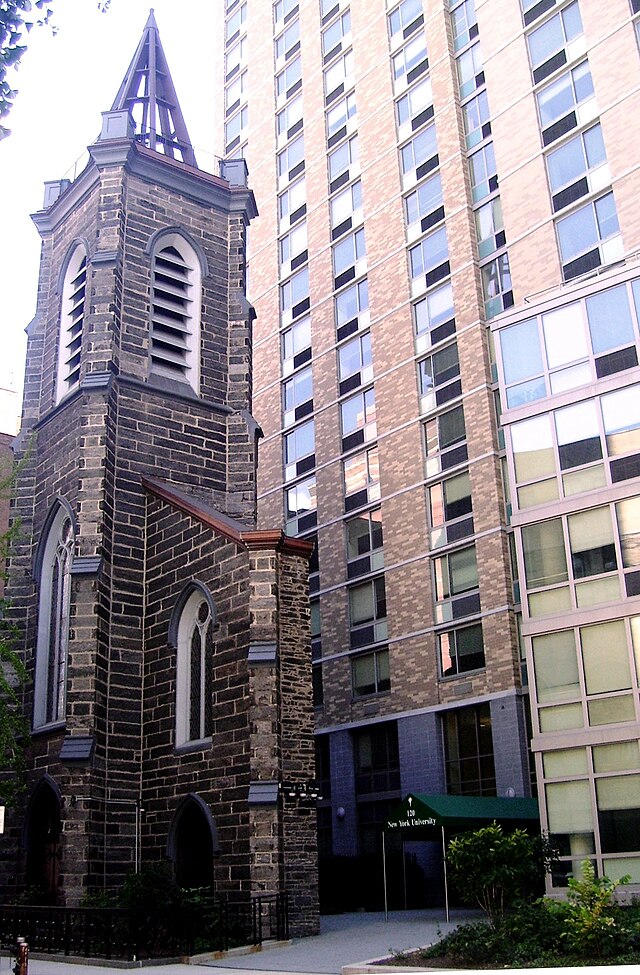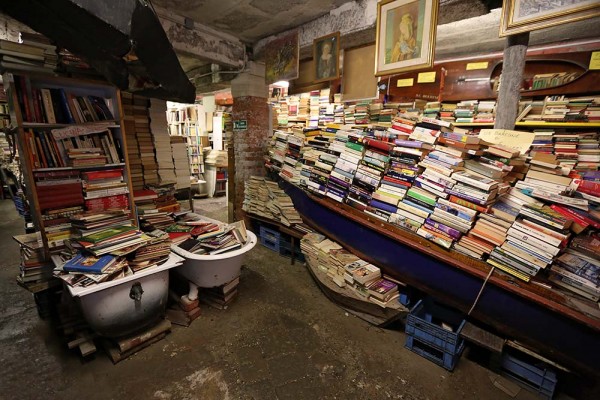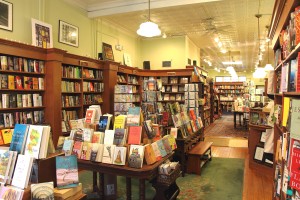It is aesthetics week here in the NRx-sphere. Here’s my contribution.
Beauty is objective in the main, subjective in the margins. Some broken relativists, for whatever reason, despise beauty and truth, seeing only the margins. They argue that all beauty is subjective. Yet, we all know how they would answer if given the choice of whether to have their faces shoved in Christina Hendrick’s bosom or in pig shit.
Objective attractiveness comes from where form and function meet. An object is attractive if its form signals the appearence of the object meeting its function. Beauty is something more than simple attractiveness, it has a a transcendence to it. Beauty is where form and function combine to illustrate truth.
To illustrate:
Local book shops are often attractive. The colouring, facade, and architecture of these shops is aligned to show that this is where quality books can be purchased from people who love books as much as you do. Yet local bookshops are rarely described as beautiful, because selling quality books is not transcendent in itself. It does not point to a higher truth.

On the other hand, houses are often described as beautiful, even if they are no more architectural pleasing than then the local book shop. This is because a house intrinsically points towards the higher truths of family, love, and home. Houses are beautiful because they embody transcendental truths beyond the mere materials and plans they are created from.
Functionality is in its own way its own form of truth. So, an object pointing to no other higher truths may still be beautiful if it embodies fully its own function, if it approaches its own platonic form in form. If form and function synchronize perfectly, beauty will appear. For example, a grandfather clock or Swiss watch may be beautiful even if it points to no higher truths, simply because the craftsmanship of the timepiece embodies the inherent truth of timepieces itself.
Ugliness is the opposite of beauty, it occurs when an object’s form signals that the object is either failing in its function, is otherwise unhealthy, or does not embody the higher truths it should embody. To be attractive is to signal functionality, to be beautiful is to signal functionality and truth, to be ugly is to signal neither.
To illustrate:
Some houses are ugly because they are signalling an inability to perform the basic functions of a house, such as keeping rain and cold air out.

On the other hand, some functional houses may still be ugly because they do not embody the higher truths they should. Due to a lack of care or upkeep, they do not point towards the transcendent ideals of home, love, and neighbourliness which they should.
To be beautiful is signal healthiness, ugliness signals sickness, yet we have to be careful, beauty and ugliness are signals, and signals can be faked. Something may signalling functionality and truth but have neither, and signals of sickness or dysfunction may not always be accurate.

Despite this, beauty and ugliness are not only signals. Beauty and ugliness are objective truths in themselves. Beauty is true, healthy, and functioning and ugliness is falsehood, unhealthy, and dysfunctional. Beauty can be faked and ugliness may be an accident, but both generally flow from an object’s essence. Beauty flows naturally from health, truth, and function, ugliness from dysfunction and falsehood.
Besides beauty appearing from the transcendent merger of form and function, form itself naturally flows from function. An object will naturally take on the form of its intended function.
To illustrate:
Local bookstores come in many types. Some bookstores have a function of discovery. They are mess, yet still have their own attractiveness, the sheer volume of books hastily assembled signals a store where books are loved. Digging through the piles of books looking for that perfect find is the function.
Other bookstores are more carefully organized. The function is to find what you’re looking for from a curated selection of books.
Despite the different forms and functions of local bookstores, when compare the big box store to the local book store we can instantly tell which is which. The big box store’s function is apparent in its form, flows naturally from its form. It is attractive, in some ways even more so than the messy bookshop above, but in other ways less attractive. Its function is an easily searchable, impersonal warehouse for books, and it function shows in the form. It is large, sterile, wide open, and efficient but it lacks the charm of the local stores which flow from functions that are more personal.
Finally, we will look at an example where everything comes together.

A Cathedral is beautiful, I have yet to see one that is not; they are always beautiful. They were created to promote the awe of God, which they do. You can’t help but feel awe and reverence as stone arches tower above you. Cathedrals point to the truths of God’ glory and greatness, hence we they are always so beautiful.
We can compare this to old-fashioned country churches, which were designed as humble places for country-folk to gather to worship. Their function is pedestrian, give people a warm, dry place to worship. They are attractive in their own way as they fill their function, but you can’t really call them beautiful as the function and the form which follows from it lack any transcendent value.
Next we have the megachurch. It has a function of gathering many people together, which it fulfills. It’s kind of attractive, in its own way, yet it feels off. There’s a slight hint of ugliness to it. It’s a bit too impersonal.
Finally, there’s modern churches. They all look different, but they all are unattractive, sometimes they even just plain ugly. Why? Because their function and form don’t align. They are not awe-inspiring, time-defying buildings like a cathedral designed to humble you before God, yet they are not simple gathering places like the country church; they don’t even have the strict functionality of the business-like megachurch.
It’s obvious from their design that their function was not decided upon, they were just built. They were built too plain and with too much modern ugliness to impress God’s greatness upon others, yet they are far more ostentatious then is necessary for a meeting place. They were built luke-warm and we spit them out.
The function informs the form, so by correctly analyzing an object’s form you can determine its function. It’s attractiveness and beauty can tell you how well it is functioning.





